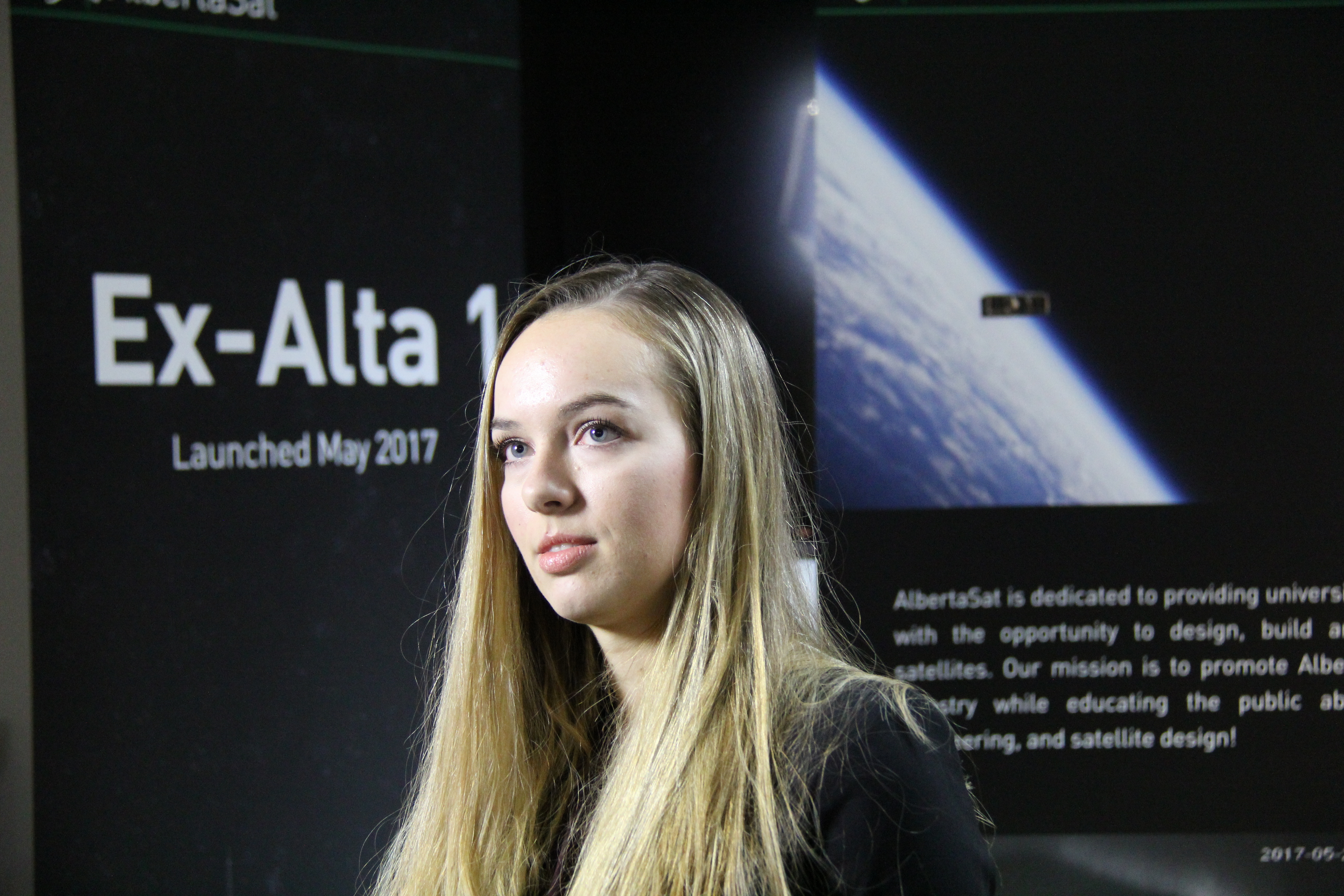
AlbertaSat project manager Callie Lissinna says a second cube satellite being designed and built by UAlberta students enhances the university's position as a leader in space science and engineering.
(Edmonton) The University of Alberta has received funding to help design, build, and launch a satellite that could help prevent or battle forest fires like the one that swept through Fort McMurray in 2016.
Today, the Canadian Space Agency announced the awarding of a satellite launch and a $250,000 grant to the U of A, naming it one of 15 institution groups across Canada receiving funding to build and launch their own cube satellites into orbit.
Callie Lissinna, project manager for the AlbertaSat student group, says team members have a personal stake in the impact of the upcoming mission.
"The data we collect will tell first responders how to allocate firefighting resources so they can better prevent disasters like the one we saw in Fort McMurray," said Lissinna, who's studying mechanical engineering. "Some students on the team have friends and family who were affected by the fire, and it was part of the personal motivation and feeling of communal loss that led to our decision to give back to the community this way."
The funding helps provide students with opportunities to apply their classroom knowledge to real-world challenges.
"This funding means that the next few generations of U of A students will have the opportunity to get hands-on experience building a spacecraft," said Lissina, who's studying mechanical engineering.
Ex-Alta 2 has three mission objectives: to monitor ground conditions in Alberta to predict where wildfires may break out, and monitor fires and their impacts; to operate an instrument that measures solar activity that may harm communications infrastructure; and to make space exploration more accessible by making open-source hardware and software available to other teams.
This democratization of space technology will start through the collaboration with teams from Yukon College in Whitehorse, YT, and Aurora College in Inuvik, NWT. The three-institution collaboration, named Northern SPIRIT (Northern Space Program for Innovative Research and Integrated Training), will operate a small constellation of CubeSats with space weather monitoring payloads, as well as the payloads chosen by each institution. The satellite design work will be distributed, but the final satellite assembly and pre-launch testing will be conducted by all participants using facilities at the University of Alberta.
Principal investigator professor Duncan Elliott and 12 co-investigators--many of them also faculty advisors to AlbertaSat--are excited about partnering with the northern institutions.
"We're keen to use space as a way to motivate youth from anywhere in Canada-including the North-to draw young people into STEM careers and to provide an opportunity to engage with an asset that the Territories themselves have been partners in building," said physics professor Ian Mann.
Elliott is confident the students will succeed. Just over a year ago the group launched its first satellite, Ex-Alta 1, which is currently in orbit monitoring space weather.
"The confirmed launch opportunity and funding for the satellite build give us the timeline and some of the resources to turn our next ideas into a functioning space mission," said Elliott.
"Our students at U of A are incredible. We've been planning for our second satellite for a while, and today we can all start turning this into a reality. The interdisciplinary learning through the hands-on design of this project will give our students a leg up in a future where access to space and its benefits are available to all."
Clayton Coutu, a master's student in the Faculty of Science and communications team lead for Ex-Alta 2, says the funding confirms the U of A's role as a leader in space science and technology.
"AlbertaSat's involvement in the Canadian CubeSat Project is our next step in growing the aerospace community at the U of A," he said. "It ensures that students passionate about space will be able to design, build, and launch spacecraft here for years to come."